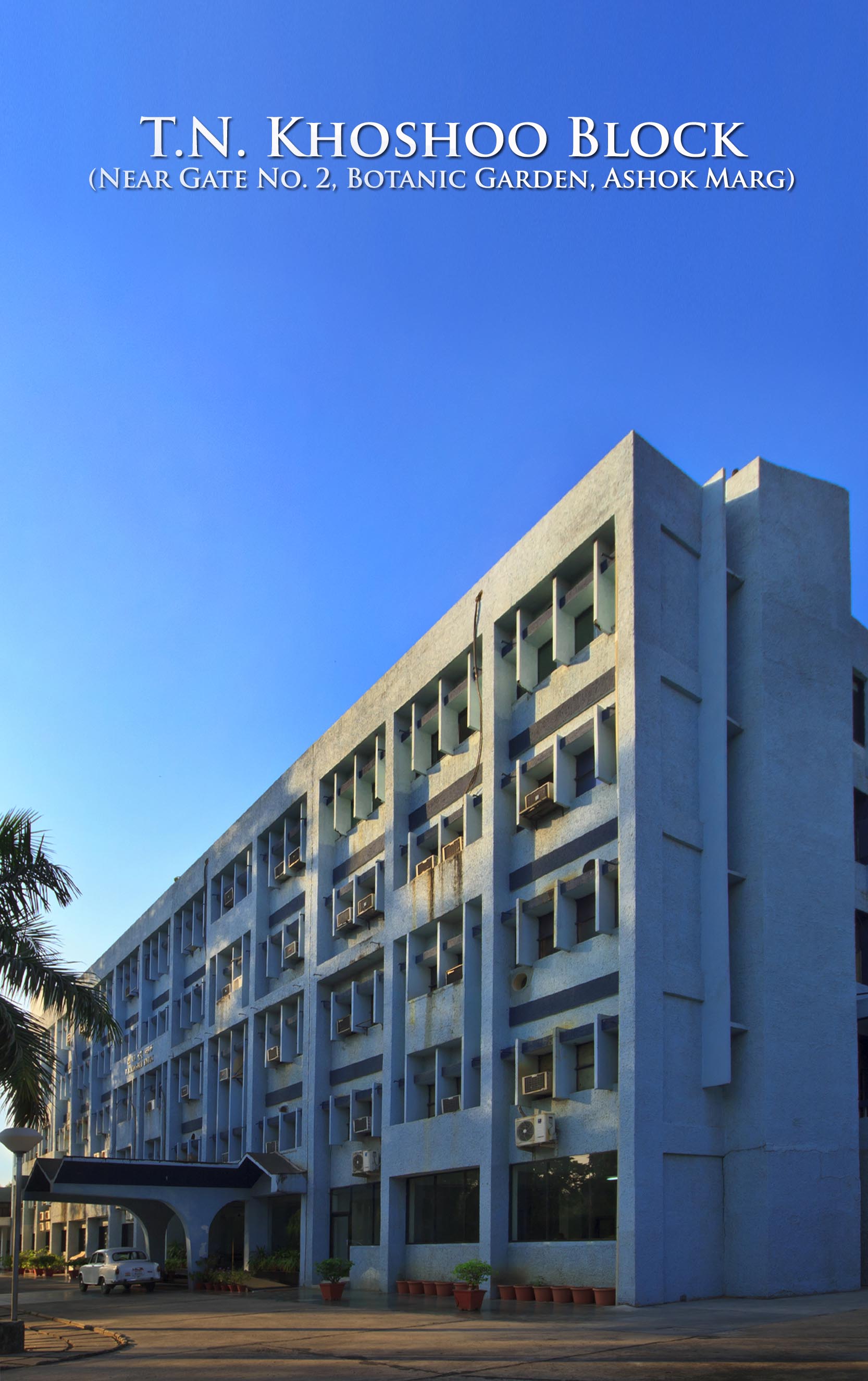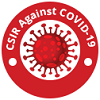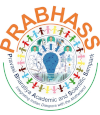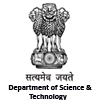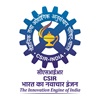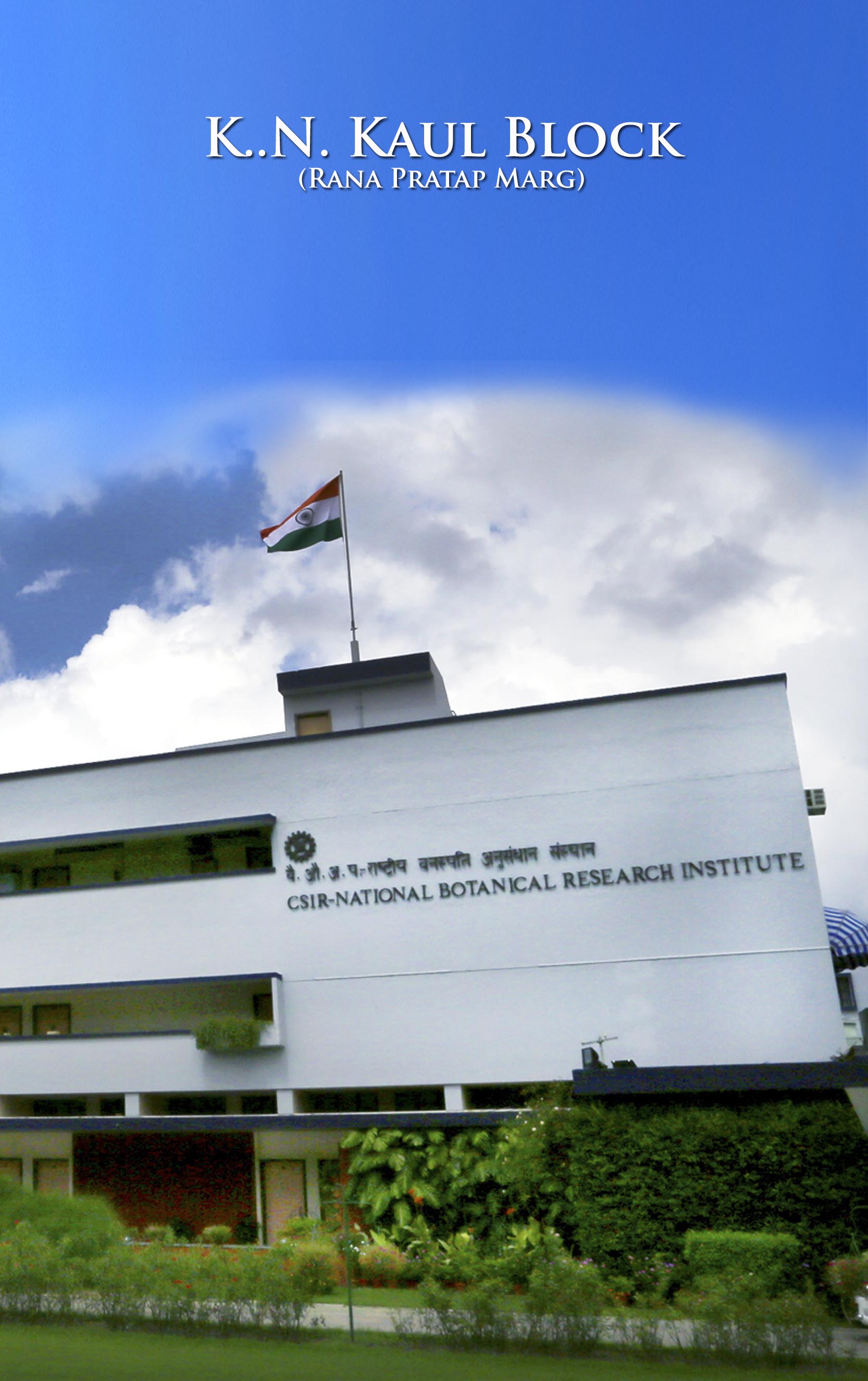

Dr. Samir V. Sawant
Chief Scientist
Research Interests
Transcription regulation is a complex and combinatorial process. During development and differentiation plants need coordinated expression of thousands of genes in wide range of tissue, developmental stages, and in response to environmental signals. It is still not well understood how they function at the molecular level and how they can switch an entire developmental programme cell fates in complex organisms. Plant transcriptional regulators and their interactions with various epigenetic factors provide new insights into general transcriptional regulatory mechanisms. Epigenetic regulation of chromatin structure is one of the important mechanisms of eukaryotic gene regulation, governing dynamic changes in the gene expression. In an approach to throw light on these above mentioned topics, below enlisted are the areas of our interest:
Transcriptional factors involved in gene regulation during stresses and fiber development in cotton.
– Epigenetic regulation governing the cotton fiber development.
– Development of novel male sterility system for the production of F1 hybrids.
– Exploring the role of transcriptional regulators during innate immunity in Arabidopsis.
– To explore the molecular mechanism of heterosis in Arabidopsis.
Dr. Samir V. Sawant
Chief Scientist
Research Summary
Research objectives of our lab include transcription regulation, epigenetic regulation, cytoplasmic male sterility, cotton genomics and heterosis.
1. Core Promoter Architecture in Regulation of Light-Mediated Responses Genes
Structural architecture of the core promoter plays important role in regulated expression of genes. The phyB perceives light signals and activates the transcription factor HY5 which directly binds to Light Responsive Elements (LRE) located upstream to the TATA box in the promoter and synergistically regulate the gene expression. Study explores four types of promoters: TATA-box containing light activated/light repressed and Inr containing light activated/light repressed promoters. We observed that the TATA-box and Inr (Initiator) elements have distinct mechanisms which are involved in light-mediated regulation, and these elements are not swappable by using either native promoters or their swapped versions of core promoter elements. These results show that mutations in either functional TATA -box or Inr elements lead to the formation of nucleosomal structure. We also found that the light-activated promoters contain different specific regulatory motif present downstream of TSS, which serves as a key factor in regulating light promoters which are parallel with these elements. This study indicates that proper coordination is required between TATA -box and Inr elements in concurrence with other conserved cis regulatory elements for core promoter specificity (Molecular Plant, 7(4):626-41, 2014).
2. Plant defensesignaling
In eukaryotes TATA binding protein associated factors (TAFs) have been postulated to regulate various physiological and pathological conditions through active transcription. TAFs have been extensively studied in yeast, Drosophila, mice and human, mediating selective and accurate transcription. The role of TAFs in plant development and defense signaling is still unknown. Our study focuses on plant innate immunity and genetic interaction of TAFs with other related transcriptional regulators in defense signaling pathway in Arabidopsisthaliana. We also identify the new targets mediating transcription regulation through TAFs in context to plant-pathogen interaction.
3. Development of reversible male sterility system in plants
BECLIN1 gene of Arabidopsis has been used in inducing male sterility in Tobacco, when expressed in stringently regulated manner in the anther tapetum. The tapetum-specific, two-component transcription system utilizes the TGTA-TBPm3 complementation principle. Glucocorticoid-dependent expression of AtBECLIN1 in tapetum has been developed to generate glucocorticoid-inducible male sterility in plants (Plant Biotechnology Journal, 1;8(9):1005-22, 2010).
For heterosis breeding in plants, a male sterility–fertility restoration system was developed in Tobacco. For this, in the female parent, tapetum-specific, high-level and postmeiotic expression of the Arabidopsis BECLIN1/ATG6 gene led to complete male sterility. The tapetum–specific expression was completely abolished and male fertility was restored in the F1 hybrid (Scientific reports,15;5:11274, 2015). The same system is also being explored in cotton for hybrid seed production.
4. Salicylic acid mediated Global nucleosome positioning in Arabidopsis thaliana
The nucleosome positioning is an important mode of regulation of eukaryotic transcription. Plants have developed an organised mechanism of stress response, one of which is Systemic acquired resistance (SAR) pathway being exogenously inducible with salicylic acid (SA). Recently we have correlated genome-wide gene expression changes to the nucleosomal remodeling in response to SA treatment in A. thaliana. We observe significant nucleosomal remodeling on SA treatment – where the SA induced genes preferably undergo significant nucleosomal depletion around TSS while SA repressed genes preferably undergo significant nucleosomal enrichment around TSS. We find that the nucleosomal remodeling is especially significant in the Non-Expresser of PR1 (NPR1)-dependent genes in the case of the SA-induced group. Further investigations confirm a distinct role of NPR1 in the nucleosome remodeling over the core promoter, leaving a cue for the need of detailed investigation about its abstract role in SA-responsive chromatin remodeling (BMC, Plant Biol. 15(1):13, 2015).
5. Characterization of Secondary cell wall stage-specific promoterand its regulators in Gossypium hirsutum
Cotton is one of the most economically important crops for textile industries. Cotton fiber is a single cellular structure that is highly elongated and has a unique chemical composition which establishes cotton fiber as a platform for study of plant cell differentiation, expansion and cell wall biogenesis. Constitutive overexpression of transgenes occasionally interferes with normal growth and developmental processes in plants. Thus, the development of fiber-specific promoters that drive transgene expression will be of great importance for both fundamental and applied studies. In our lab, we have found that GhGDSL is expreesed in SCW of cotton and its promoter is regulated by the GhMYB1 which is co-expressed with GhGDSL during SCW biosynthesis stage of cotton fiber development (Plant Biotechnolgy Journal, 15,pp.1163-1174, 2017). GhGDSLanditspromoterarethereforepotentialtoolsfortheimprovementofcotton fiber qualitytraits.
6. Role of GhHDA5 in H3K9 deacetylation and fiber initiation in cotton
Epigenetic regulation of chromatin structure is one of the important mechanisms of eukaryotic gene regulation, governing dynamic changes in the gene expression. Cotton fiber is regulated at epigenomic level by DNA and histone modifications. Among various types of histone modifications histone acetylation is very important. Histone acetylation is dynamically regulated by HATs and HDACs. The involvement of a member of HDAC family that is HDA5 has been confirmed in cotton fiber development.The partially purified GhHDA5 protein used for the histone deacetylase activity assay and observed that GhHDA5 deacetylates acH3K9 with higher efficiency than acH3K14 peptides at 2µg protein concentration. The detailed molecular and genomics analysis suggested that GhHDA5 primarily acts via modulation of H3K9ac histone marks regulates expression of many hormones, stress and development-related genes involved in fiber development (The Plant Journal. 95(6):1069-1083, 2018). The mechanistic details of HATs or HDACs in cotton fiber development are being explored in our lab.
7. Oxidative stress induced by inhibition of heat shock proteins (HSP90 and HSP70) leads to suppression of cotton fiber development
Apart from epigenetic modifiers several other important factors such as Heat shock proteins are involved in maintenance of protein homeostasis during different stages of cellular development. Microarray data analysis of five Gossypiumhirsutum genotypes revealed high transcript levels of GhHSP90 and GhHSP70 genes at different stages of fiber development, indicating their importance in the process. The treatment of specific inhibitors novobiocin (Nov; HSP90) and pifithrin/2-phenylethynesulfonamide (Pif; HSP70) in in-vitro cultured ovules resulted in a fewer number of fiber initials and retardation in fiber elongation. The detailed molecular analysis suggested that inhibition of heat shock proteins HSP90 and HSP70 induce oxidative stress and suppressing cotton fiber development (Scientific reports, 8(1), 3620, 2018).
8. Transcriptional regulation during abiotic stresses
Abiotic stresses are major limiting factors of crop yields worldwide. To understand, at the molecular level, how plants respond to adverse conditions and thereby adapt to a changing environment will help in developing plants that can better cope with stresses. Acquisition of stress tolerance requires orchestration of a multitude of biochemical and physiological changes, and most of which depends upon changes in gene expression. Four genotypes of G.herbaceum(Vagad, GujCot-21, RAHS-14 and RAHS-IPS-187) were exposed to mannitol-induced osmotic stress. The gene expression profiling suggests that vagad and gujcot-21 are drought tolerant while RAHS14 and RAHS-IPS-187 are drought sensitive genotypes. Under osmotic stress the drought tolerant genotypes (Vagad and Gujcot-21) shows increased root length in comparison to drought sensitive genotypes (RAHS-14 and RAHS-IPS-187) (BMC Genomics,13:680, 2012). Yet another work,CAMTA1 gene function under drought stress and open new perspectives for elevating drought tolerance which could eventually lead to enhanced crop production. In camta1, root development was abolished showing high-susceptibility to induced osmotic stress resulting in small wrinkled rosette leaves and stunted primary root. In camta1 under drought condition, we identified growth retardation, poor WUE, low photosystem II efficiency, decline in RWC and higher sensitivity to drought with reduced survivability (BMC Genomics, 14:216, 2013).
Dr. Samir V. Sawant
Chief Scientist
Publications
1. Kumar V, Singh B, Singh SK, Rai KM, Singh SP, Sable A, Pant P, Saxena G and Sawant SV (2018). Role of GhHDA5 in H3K9 deacetylation and fiber initiation in Gossypiumhirsutum. The Plant Journal. 95(6):1069-1083.
2. Sable A, Rai KM, Choudhary A, Yadav VK, Agarwal SK andSawant SV (2018). Inhibition of Heat Shock proteins HSP90 and HSP70 induce oxidative stress, suppressing cotton fiber development. Scientific reports, 8(1), 3620.
3. Dubey NK, Mishra DK, Idris A, Nigam D, Singh PK andSawant SV (2018). Whitefly and aphid inducible promoters of Arabidopsis thaliana L. Journal of genetics, 97(1), 109-119.
4. Pant P, Iqbal Z, Pandey BK and Sawant SV (2018). Genome-wide comparative and evolutionary analysis of Calmodulin-binding Transcription Activator (CAMTA) family in Gossypium species. Scientific reports, 8(1), 5573.
5. Yadav VK, Yadav VK, Pant P1, Singh SP, Maurya R, Sable A and Sawant SV (2017). GhMYB1 regulates SCW stage-specific expression of the GhGDSL promoter in the fibers of Gossypiumhirsutum L. Plant Biotechnol J, 15(9):1163-1174.
6. Imran M., Pant P, Shanbhag YP and Sawant SV (2017). Genome Sequence of Microbulbifermangrovi DD-13T Reveals Its Versatility to Degrade Multiple Polysaccharides. Marine Biotechnology, 19(1):116-124.
7. Singh M, Bag S, Bhardwaj A, Ranjan A, Mantri S, Nigam D, Sharma Y and Sawant SV (2015). Global nucleosome positioning regulates salicylic acid mediated transcription in Arabidopsis thaliana. BMC Plant Biol. 15(1):13.
8. Singh SP, Singh SP, Pandey T, Singh RR and Sawant SV (2015). A novel male sterility-fertility restoration system in plants for hybrid seed production. Scientific Reports.15;5:11274. doi: 10.1038/srep11274.
9. Hulse-Kemp AM, Lemm J, Plieske J, Ashrafi H, Buyyarapu R, Fang DD, Frelichowski J, Giband M, Hague S, Hinze LL, Kochan KJ, Riggs PK, Scheffler JA, Udall JA, Ulloa M, Wang SS, Zhu QH, Bag SK, Bhardwaj A, Burke JJ, Byers RL, Claverie M, Gore MA, Harker DB, Islam MS, Jenkins JN, Jones DC, Lacape JM, Llewellyn DJ, Percy RG, Pepper AE, Poland JA, Mohan Rai K, Sawant SV, Singh SK, Spriggs A, Taylor JM, Wang F, Yourstone SM, Zheng X, Lawley CT, Ganal MW, Van Deynze A, Wilson IW, Stelly DM (2015) Development of a 63K SNP Array for Cotton and High-Density Mapping of Intraspecific and Interspecific Populations of Gossypium spp.G3 (Bethesda). 22;5(6):1187-209. doi: 10.1534/g3.115.018416.
10. Srivastava R, Rai KM, Singh SP, Pandey B and Sawant SV (2015) Spt-Ada-Gcn5-Acetyltransferase (SAGA) Complex in Plants: Genome wide identification, evolutionary conservation and functional determination. PlosOneDOI:10.1371/journal.pone.0134709.
11. Srivastava A, Sawant SV and Jena SN (2015) Microarray-based large scale detection of single feature polymorphism in Gossypiumhirsutum L.J Genet 94(4):669-76.
12. Srivastava R, Rai KM, Srivastava M, Kumar V, Pandey B, Singh SP, Singh BD, Tuli R and Sawant SV (2014). Distinct role of core promoter architecture in regulation of light mediated response in plant genes. Molecular Plant, 7(4):626-41.
13. Nigam D, Kavita P, Tripathi RK, Ranjan A, Goel R, Asif M, Shukla A, Singh G, Rana D and Sawant SV (2014). Transcriptome dynamics during fibre development in contrasting genotypes of Gossypiumhirsutum L.Plant Biotechnol. J. 12, (2), 204–218.
Dr. Samir V. Sawant
Chief Scientist
Patents
Patent: 18 nos.
Dr. Samir V. Sawant
Chief Scientist
Research Scholars
Dr. Pravin Prakash, Research Associate
Dr. Rakesh Srivastava, CSIR Pool Scientist (CSIR-SRA)
Dr. Ajay Kumar, SERB – National Post-Doctoral Fellow
Dr. Amita Dubey, DST-Women Scientist
Dr. Babita Singh, Post-Doctoral Fellow
Ms. Rashmi Maurya, Ph.D Scholar
Ms. Bindu Pandey, Ph.D Scholar
Mr. Amit Chaudhary, Ph.D Scholar
Mr. Bhupendra Kumar Pandey, Ph.D Scholar
Ms. Neha Agarwal, Ph.D Scholar
Ms. Uzma Khatoon, Ph.D Scholar
Mr. Rishi Kumar Verma, Ph.D Scholar
Mr. Kishan Sahu, Ph.D Scholar
Ms. Anamika Sengar, Ph.D Scholar
Mr. Vipin Kumar Tiwari, Ph.D Scholar
Alka Singh, Ph.D Scholar
Mr. Srimanta Kanji, Ph.D Scholar
Mr. Akash Verma, Ph.D Scholar
Ms. Deeksha Sharma, Project Assistant II
Dr. Samir V. Sawant
Chief Scientist
Address
Plant Molecular Biology and Genetic Engineering Division, T.N. Khoshoo Block
CSIR-National Botanical Research Institute, Rana Pratap Marg, Lucknow-226001, INDIA
Phone no.: 0522-2297947
Email: samirsawant@nbri.res.in
